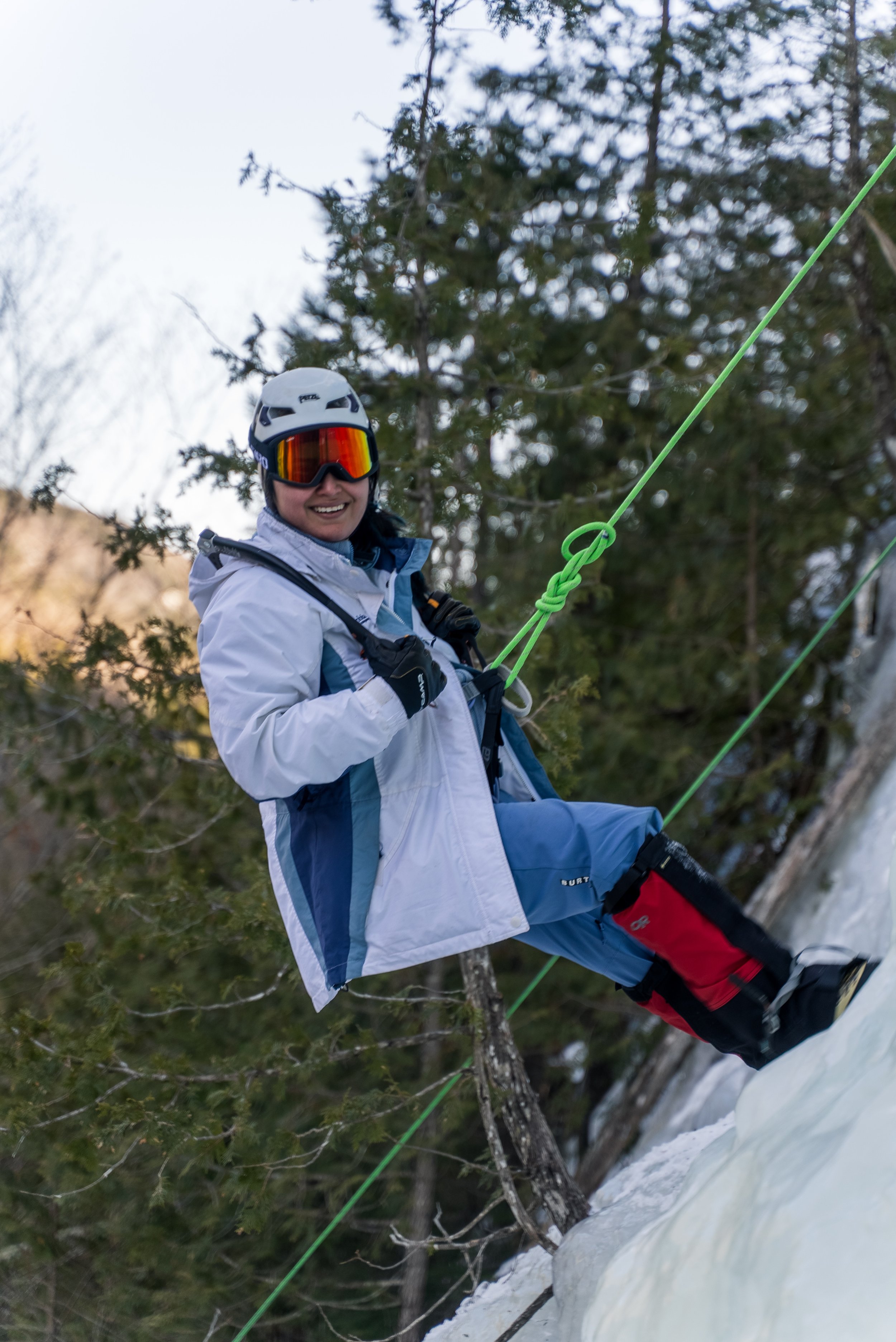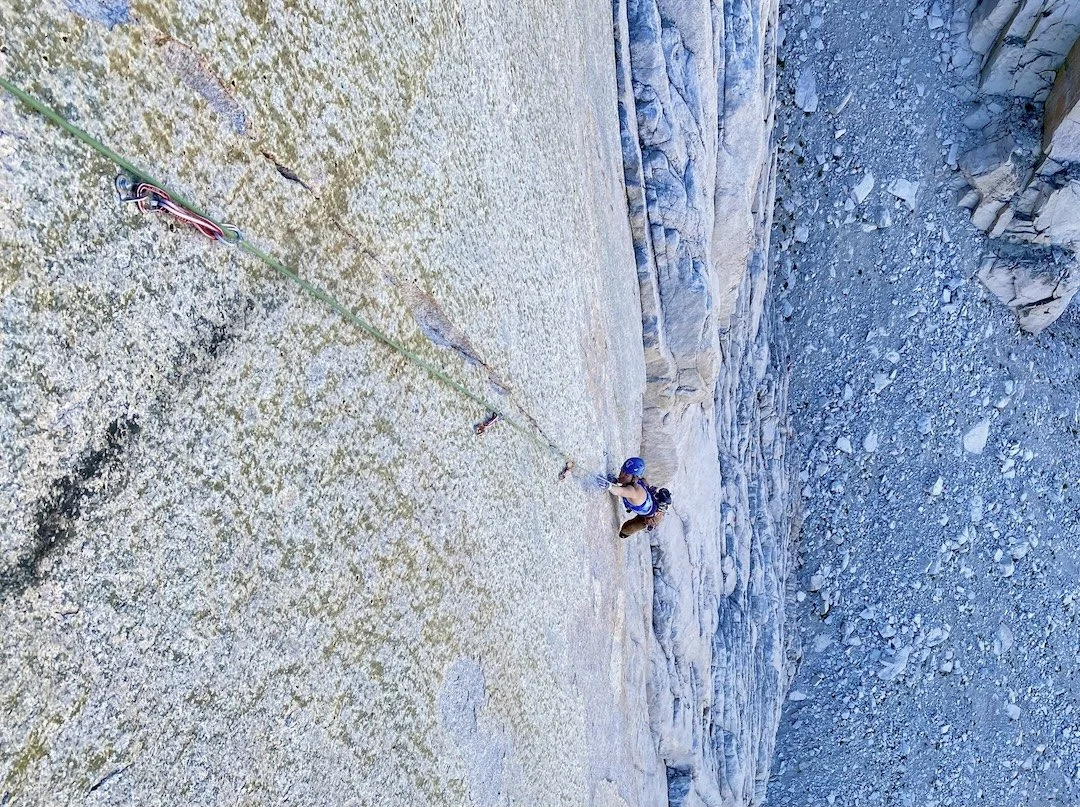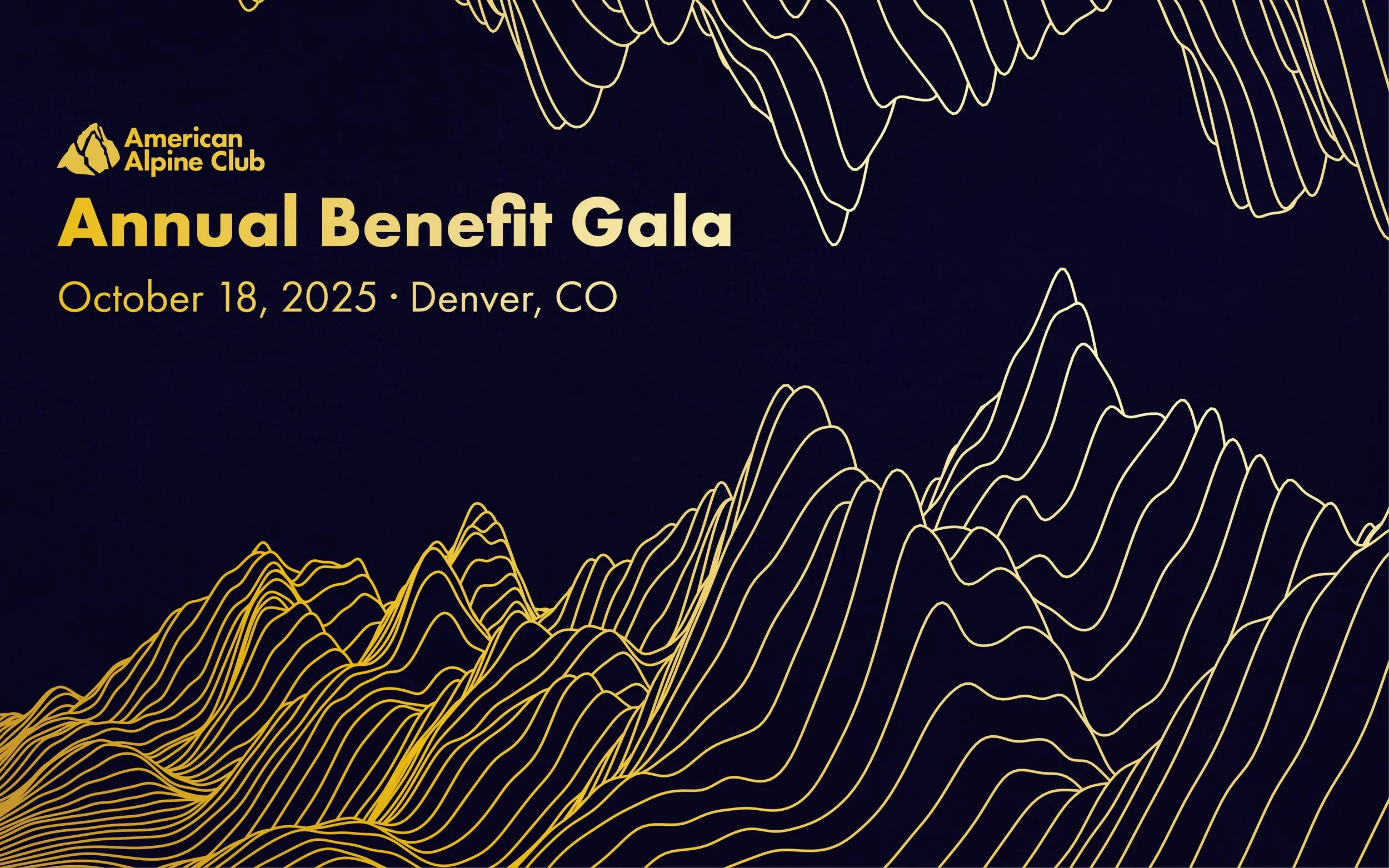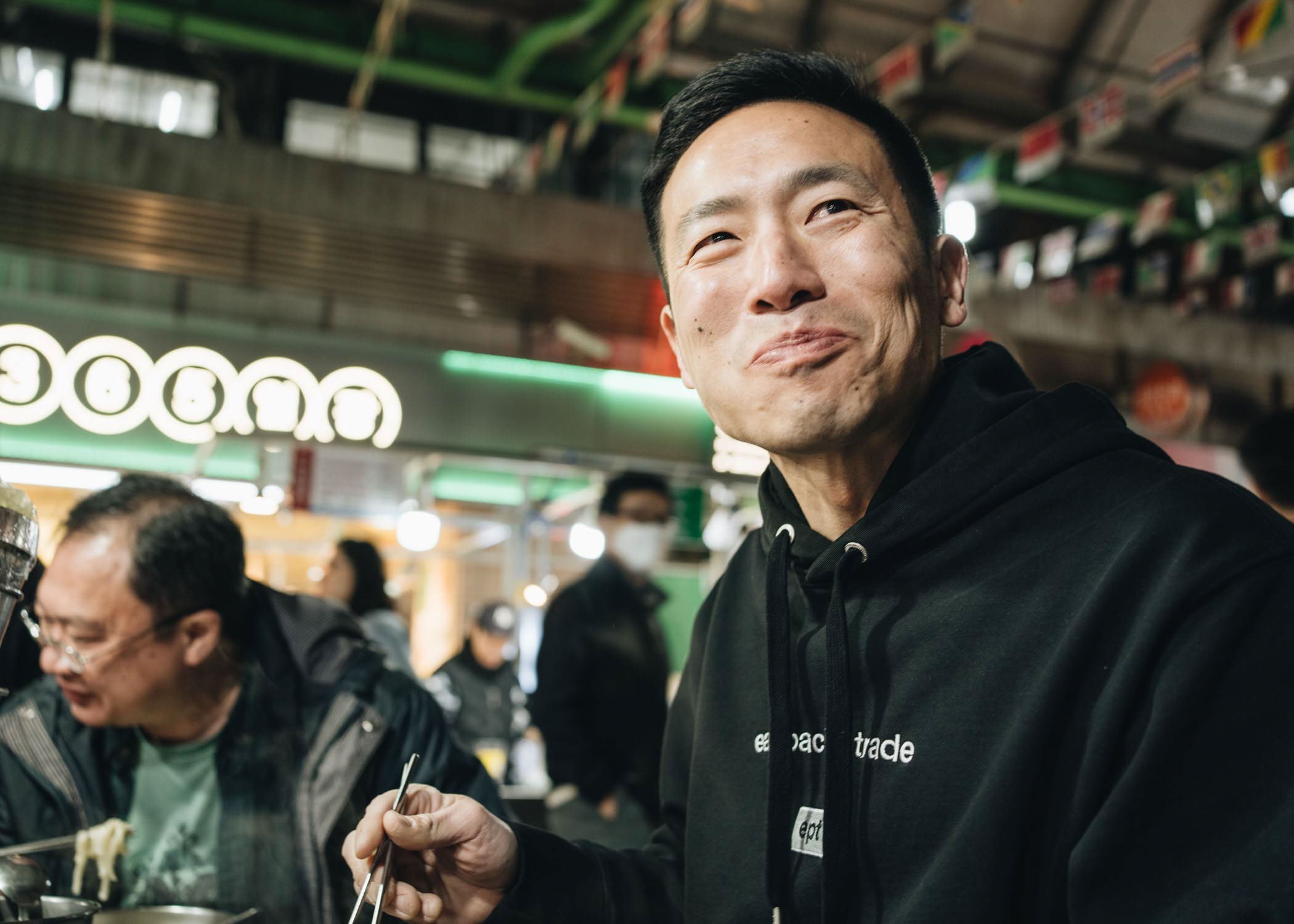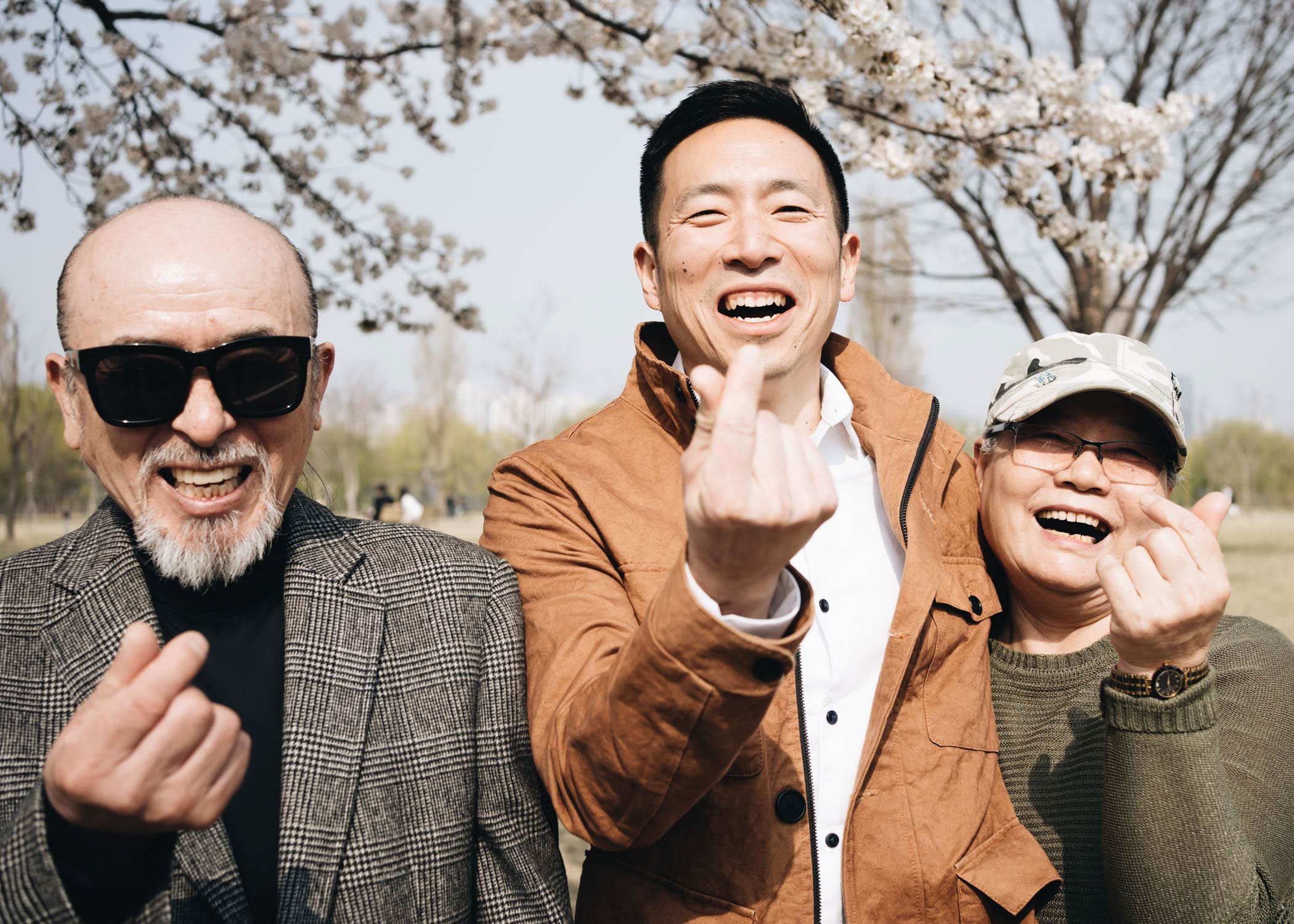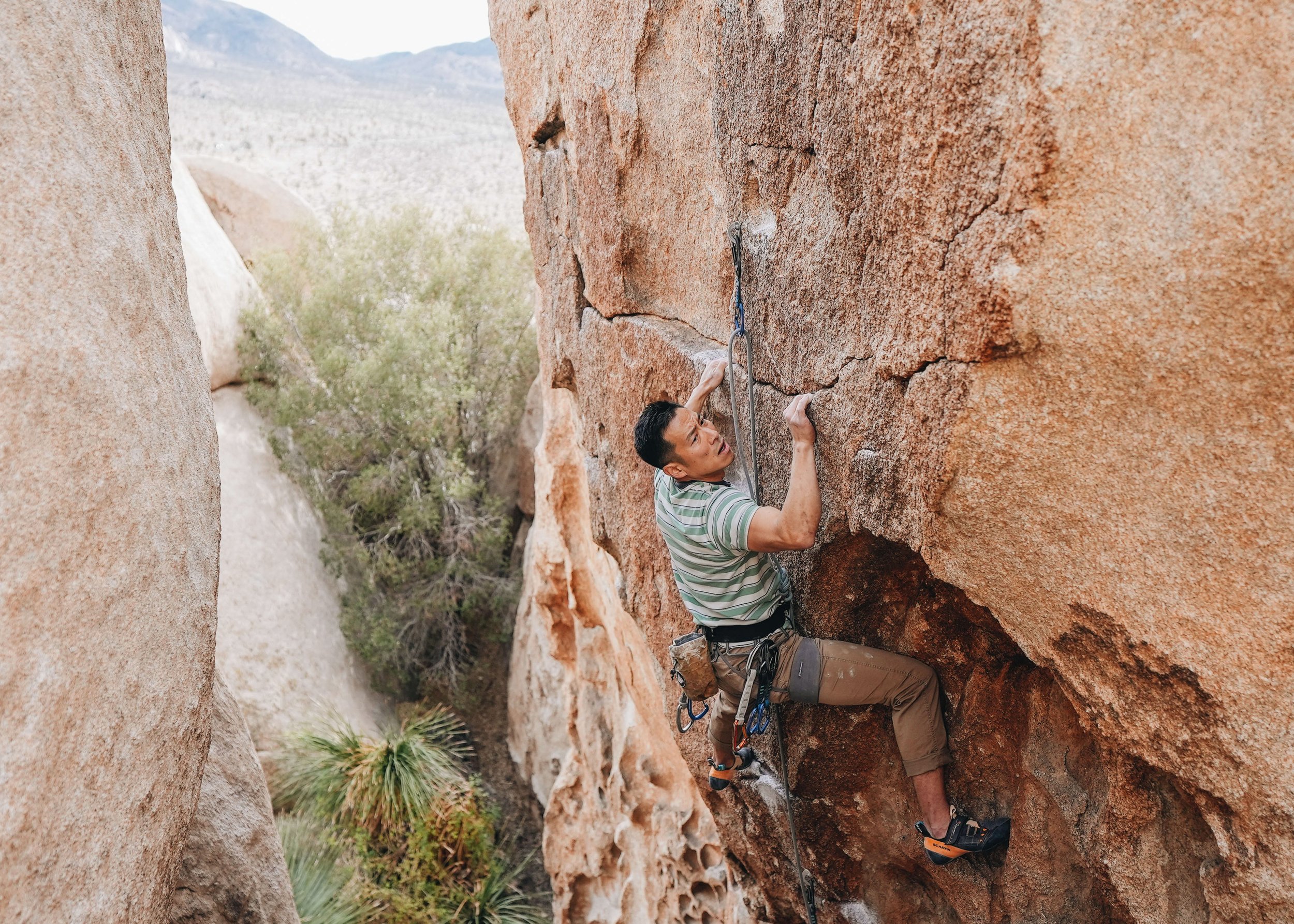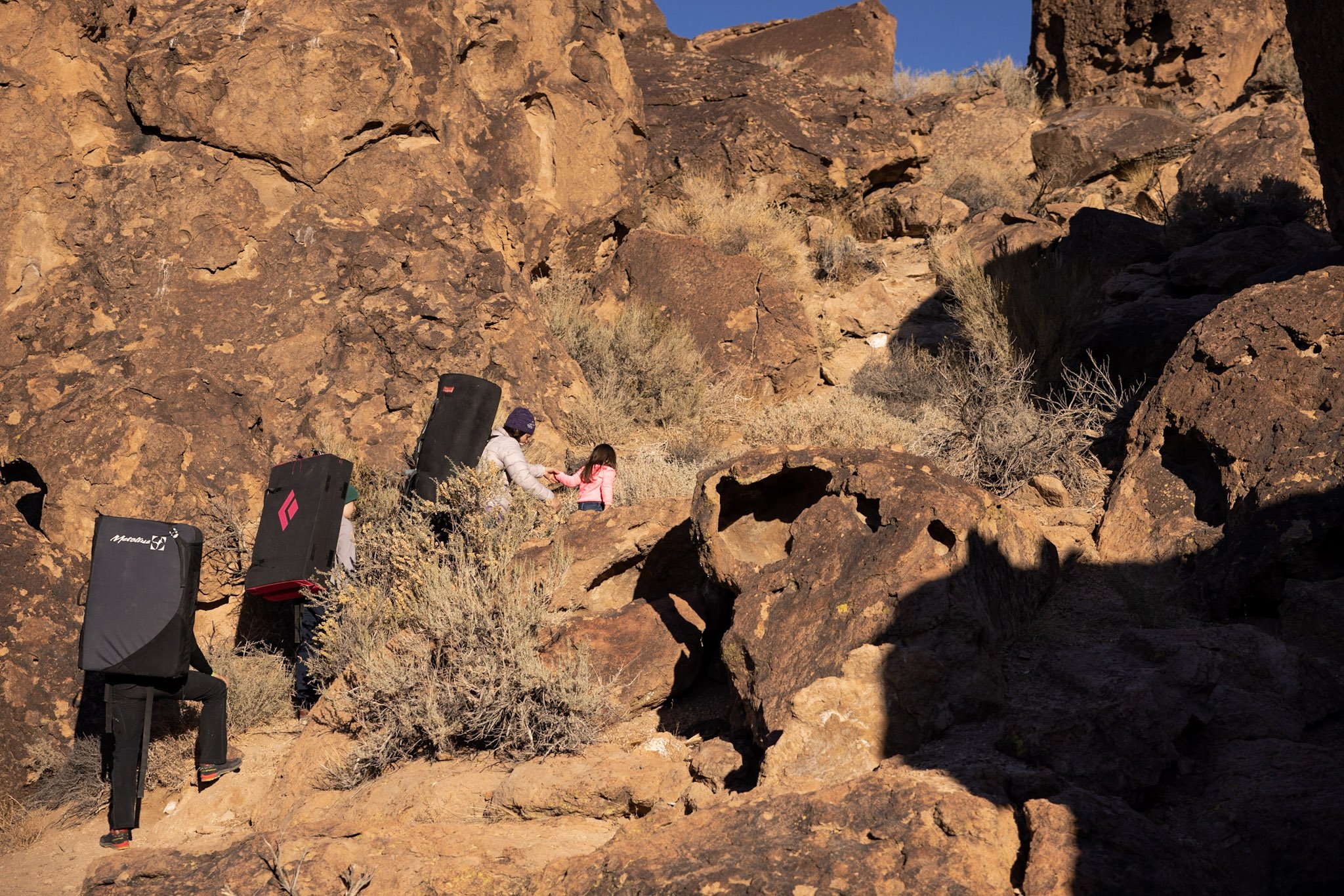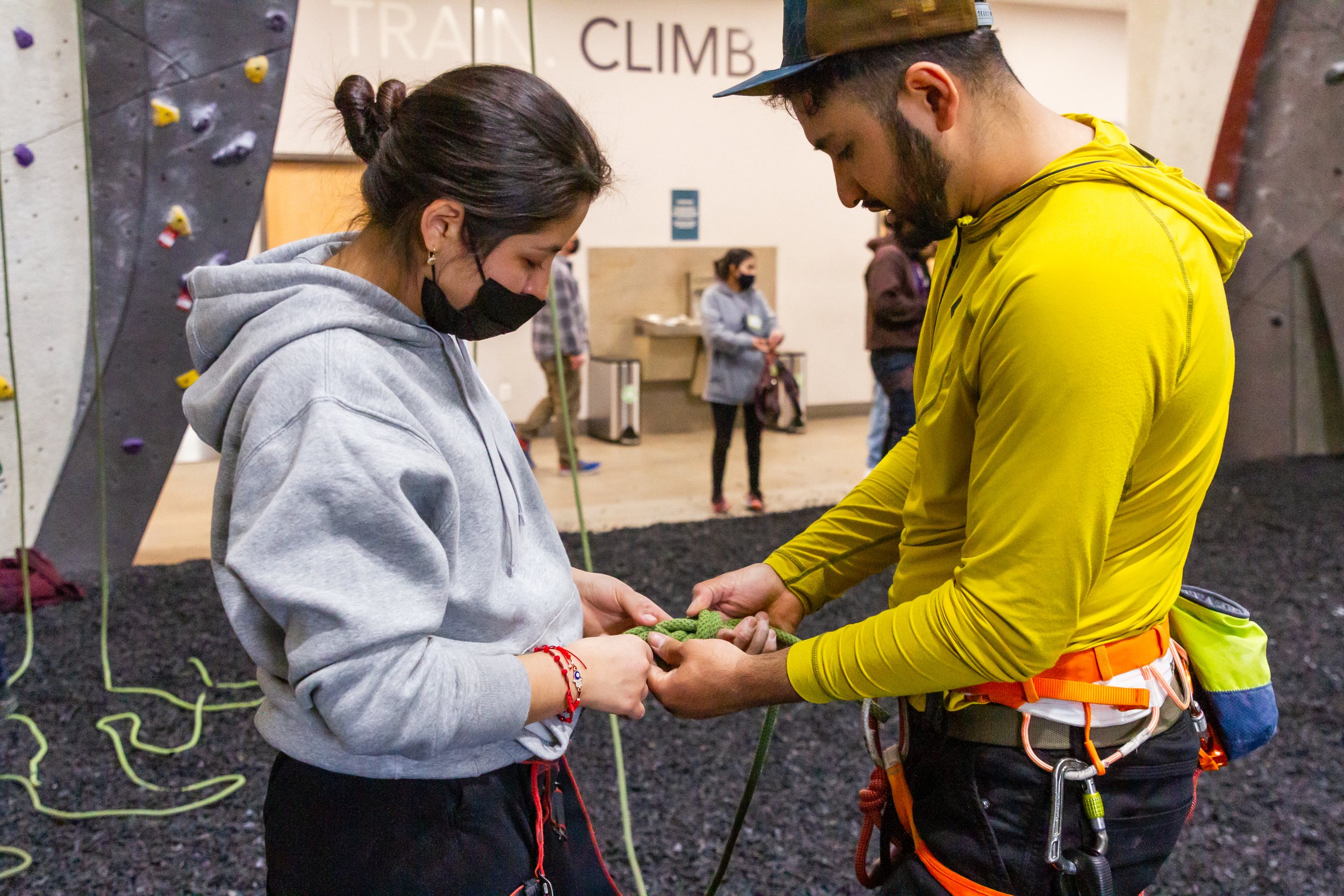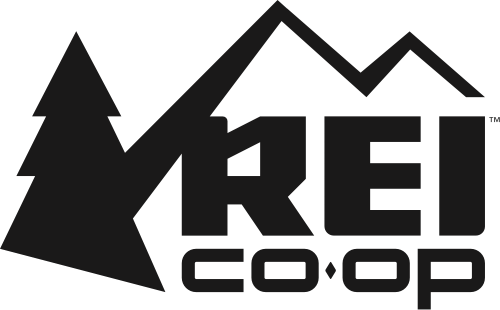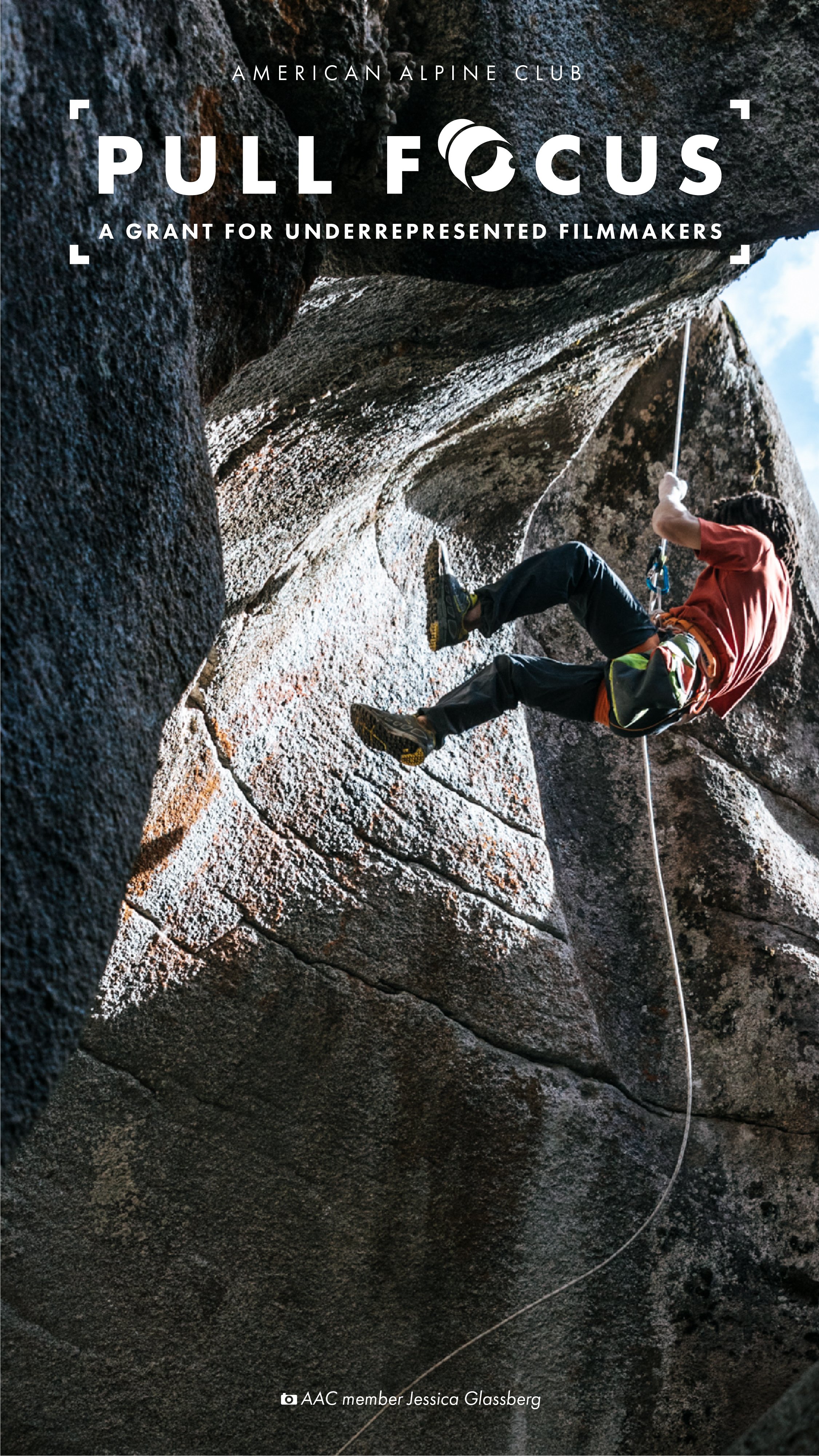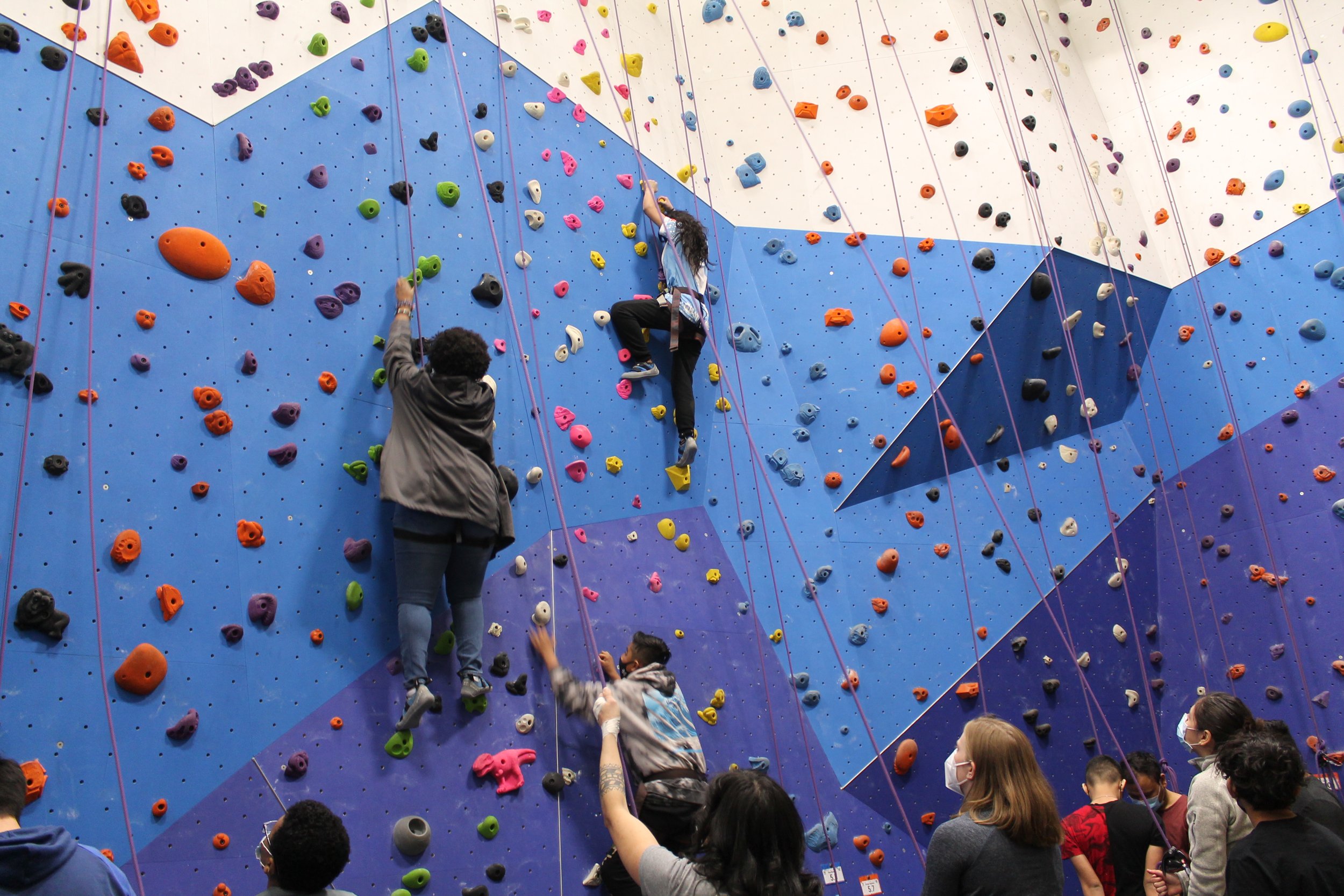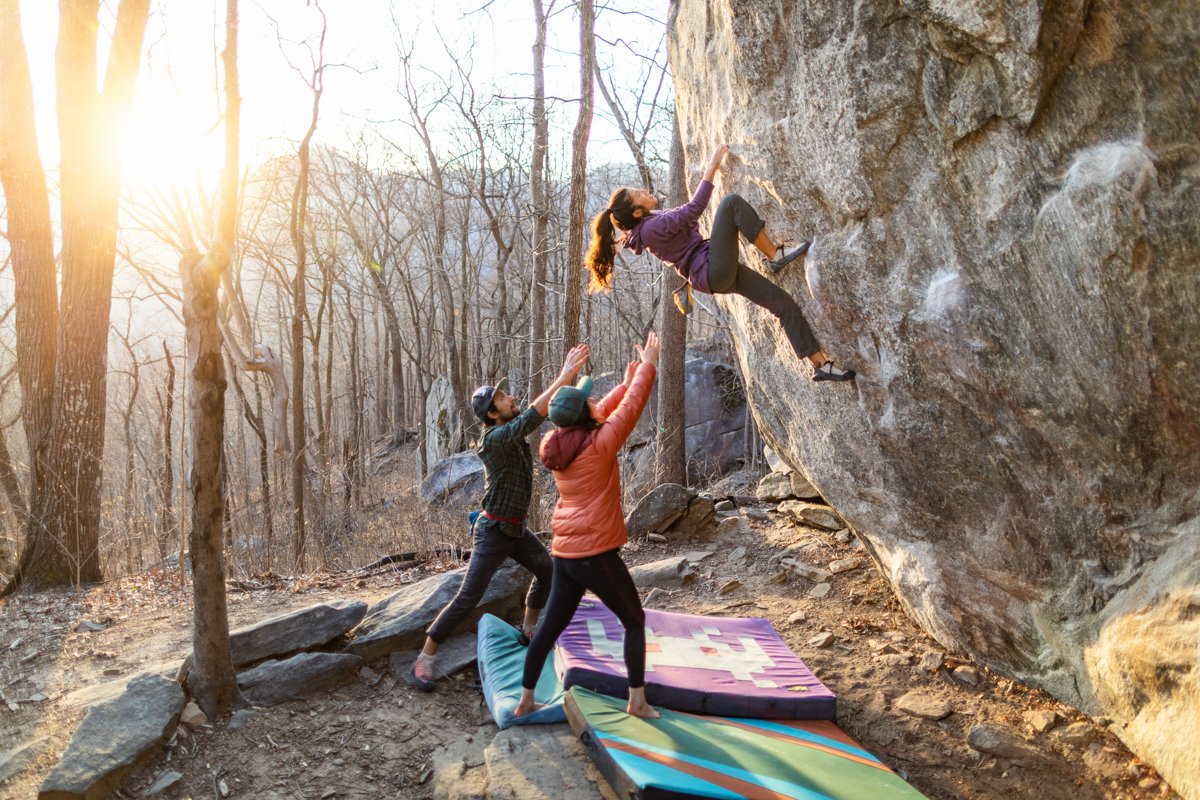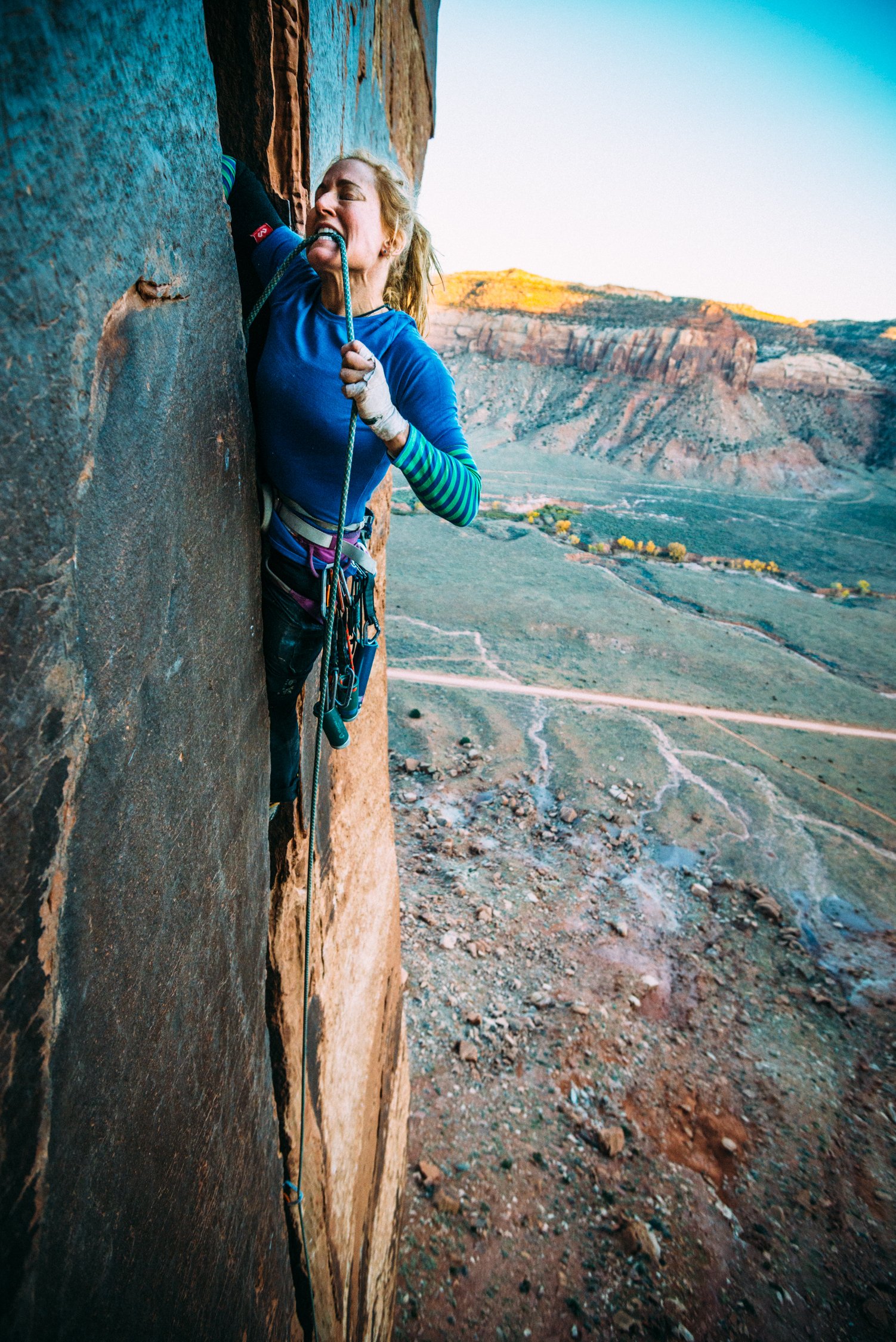The AAC DC Chapter hosts a New Ice Climber Weekend in the Adirondacks with Escala
PC: Colt Bradley
Grassroots: Unearthing the Future of Climbing
By: Sierra McGivney
The sun peeked over the Pitchoff Quarry crag, hitting the ice and creating an enchanting aura. The cool February air was saturated with people laughing and ice tools scraping against the ice. If you listened closely, you'd notice that the conversations were a beautiful mix of English and Spanish.
PC: Colt Bradley
The New Ice Climber Weekend (NICW), hosted by the AAC DC Chapter, has become an annual event. Piotr Andrzejczak, the AAC DC chapter chair and organizer of the New Ice Climber Weekend, believes mentorship is paramount in climbing. The weekend aims to provide participants with an opportunity to try ice climbing, find ice climbing partners, and have a starting point for more significant objectives. Above all, it aims to minimize the barrier to entry for ice climbing.
Last year, Andrzejczak approached Melissa Rojas, the co-founder of Escala and volunteer with the DC Chapter, about partnering to do a New Ice Climber Weekend with Escala. Escala is part of the American Alpine Club's Affiliate Support Network, which provides emerging affinity groups with resources in order to minimize barriers in their operations and serving their community. Escala “creates accessibility, expands representation, and increases visibility in climbing for Hispanic and Latine individuals by building community, sharing culture, and mentoring one another.”
Climbing can be a challenging sport to get into. It can require shoes, a harness, a gym membership, and climbing partners. Ice climbing requires all that plus more: ice tools, crampons, and winter clothing.
"There's a lot more complexity to ice climbing," said Rojas.
PC: Colt Bradley
Ice climbing can be limited not only in quantity but also in quality. Due to climate change, the ice in the Adirondacks loses its quality faster than previous decades and the climbs are only of good quality for a limited amount of time. DC climbers are at least seven hours from the Adirondacks, plus traffic and stops, so ice climbing for them has unforeseen logistical challenges. During the NICW, participants can focus more on the basics of learning to ice climb and less on logistics.
Rojas and Andrzejczak hosted a pre-meetup/virtual session so that participants could get to know each other and ask questions ahead of time. "We wanted to give folks an opportunity to ice climb in a supportive environment where they felt like they were in a community and were being supported throughout the whole process, from the planning stage to the actual trip," said Rojas.
Another focus of the weekend was creating a film. Colt Bradley attended the New Ice Climber Weekend in 2023 as a videographer and as a participant. Bradley volunteers with the AAC Baltimore Chapter and is also Andrzejczak's climbing partner. Last year, he created four Instagram videos that captured the excitement of ice climbing for the first time. When asked to film the Escala x NICW this year, he wanted to do something longer and more story-focused. Bradley and Rojas talked beforehand about focusing the film on the Escala community and highlighting the bond made possible through its existence.
Rojas has worked hard to build up this blended community of Spanish-speaking climbers. Spanish has many flavors, as it is spoken in many different countries with different cultures—all unique in their own way. The film focused on reflecting and representing the vibrant community of Escala.
Soon, they all found themselves at Pitchoff Quarry in the Adirondacks. While the participants learned how to swing their ice tools and kick their crampons into the ice, Bradley sought out community moments. He wanted to put viewers in the moment as participants climbed, so he mic'd some participants; including Kathya Meza.
Meza spoke openly during interviews and had a compelling story that Bradley thought would resonate with the viewers.
PC: Colt Bradley
In the film's final scene, viewers can hear Meza swinging her tools into the ice, see her smiling, and experience her problem solving as she pushes herself outside her comfort zone. Bradley filmed this scene the first day before they even identified her as a focal point of the film.
Bradley continued to capture the essence of the Latino influence over the weekend. On the second day, the group headed to Chapel Pond. Despite the cold 21-degree weather and whipping wind, the energy was high. Mentors taught mentees how to layer correctly, and folks danced salsa at the base of the crag to stay warm. Later, feeling connected and energized from this incredible trip, the group salsa danced on the frozen Chapel Pond with the iconic ice falls that makeup Chounaird's Gully and Power Play in the background.
"For the twenty-some-odd years I've been going to the Adirondacks to ice climb, I've never even thought that maybe one day I'll be dancing on Chapel Pond, hosting a new Ice Climbing weekend with Escala" said Piotr.
For Rojas, it was some of her best salsa dancing. She was so focused on staying warm that it freed her from overthinking her dancing skills. The dancing didn't stop at Chapel Pond. After dinner, the group returned to the inn and fired up the woodstove in the recreation room. The sound of salsa dancing and glee filled the room.
The NICW isn't about going out and sending, so naturally, this isn't the type of climbing film where climbers try hard on overhung climbs overlaid with cool EDM music. Every climber remembers the moment they got hooked on climbing, whether sport, trad, ice, or alpine climbing; they remember the thrill of reaching the top of a climb for the first time, out of breath but more excited than ever. Climbing is a multifaceted sport, and climbing films should be reflective of that. Showing the first-time-swinging-an-ice-tool moments at the NICW inspires someone to take that first step toward something new or nostalgic for the longtime climber.
PC: Colt Bradley
"I think the thing about Escala is it's more than just a climbing group. It's a community," said Rojas.
Escala is a place where Rojas can be all parts of herself. Rojas has four children and refers to Escala as her fifth baby. She doesn't have to explain why she climbs or her love for Sábado Gigante–a famous variety show in Latin America. Everyone in her community recognizes all aspects of her. Her identity as a climber and as a Latina can be one.
One participant of the NICW approached Rojas and said it was the best experience of their life.
PC: Colt Bradley
"He said it with such sincerity that it was really humbling in the moment," said Rojas.
Leading an affinity group can often feel like running on a never-ending treadmill of organizing event after event, where reflection takes a backseat. However, according to Rojas if she can positively affect just one person, it makes all the work worth it.
Salsa music playing over Chapel Pond, smiling faces red from the winter frost, and dancing in crampons are the mosaic of moments that make up the heart of Escala, the DC Chapter, and the New Ice Climber Weekend.






